The earliest known human settlements in what is now the Democratic Republic of the Congo have been dated back to the Middle Stone Age, approximately 90,000 years ago. The first real states, such as the Kongo, the Lunda, the Luba and Kuba, appeared south of the equatorial forest on the savannah from the 14th century onwards.
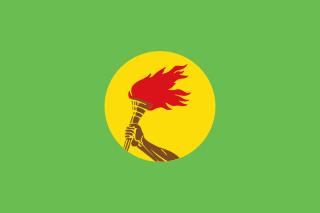
Zaire, officially the Republic of Zaire, was the name of the Democratic Republic of the Congo from 1971 to 18 May 1997. Located in Central Africa, it was, by area, the third-largest country in Africa after Sudan and Algeria, and the 11th-largest country in the world from 1965 to 1997. With a population of over 23 million, Zaire was the most populous Francophone country in Africa. Zaire played a central role during the Cold War.

Laurent-Désiré Kabila usually known as Laurent Kabila, was a Congolese rebel and politician who served as the third president of the Democratic Republic of the Congo from 1997 until his assassination in 2001.

Mobutu Sese Seko Kuku Ngbendu wa za Banga, often shortened to Mobutu Sese Seko or Mobutu and also known by his initials MSS, was a Congolese politician and military officer who was the first and only president of Zaire from 1971 to 1997. Previously, Mobutu served as the second president of the Democratic Republic of the Congo from 1965 to 1971. He also served as the fifth chairperson of the Organisation of African Unity from 1967 to 1968. During the Congo Crisis, Mobutu, serving as Chief of Staff of the Army and supported by Belgium and the United States, deposed the democratically elected government of left-wing nationalist Patrice Lumumba in 1960. Mobutu installed a government that arranged for Lumumba's execution in 1961, and continued to lead the country's armed forces until he took power directly in a second coup in 1965.

South Kivu is one of 26 provinces of the Democratic Republic of the Congo (DRC). Its capital is Bukavu.
Banyamulenge is a community that lives mainly in South Kivu province. The Banyamulenge are not culturally and socially distinct from the Tutsi of South Kivu, with most speaking Kinyamulenge, a mix of Kinyarwanda, Kirundi, Ha language, and Swahili. Banyamulenge played a role in Mobutu's war against and victory over the Simba Rebellion, which was not supported by the majority of other tribes in South Kivu.They did this inorder to be naturalised in what was then Zaire. Their role during the First Congo War and subsequent regional conflicts (Rally for Congolese Democracy–Goma, Movement for the Liberation of the Congo, National Congress for the Defence of the People, and more importantly for the fact that two of the most influential presidents of their country declared them as enemy of the State both in 1996 and 1998.

The Alliance of Democratic Forces for the Liberation of Congo-Zaire, also known by the French acronym AFDL, was a coalition of Rwandan, Ugandan, Burundian, and Congolese dissidents, disgruntled minority groups, and nations that toppled Mobutu Sese Seko and brought Laurent-Désiré Kabila to power in the First Congo War. Although the group was successful in overthrowing Mobutu, the alliance fell apart after Kabila did not agree to be dictated by his foreign backers, Rwanda and Uganda, which marked the beginning of the Second Congo War in 1998.

The First Congo War, also known as Africa's First World War, was a civil and international military conflict that lasted from 24 October 1996 to 16 May 1997, primarily taking place in Zaire. The war resulted in the overthrow of Zairean President Mobutu Sese Seko, who was replaced by rebel leader Laurent-Désiré Kabila. This conflict, which also involved multiple neighboring countries, set the stage for the Second Congo War (1998–2003) due to tensions between Kabila and his former allies.

The Army for the Liberation of Rwanda was a rebel group largely composed of former members of the Interahamwe and Rwandan Armed Forces. Operating mostly in the eastern regions of the Democratic Republic of the Congo along the border with Rwanda, it carried out attacks throughout the Second Congo War against forces aligned with Rwanda and Uganda. In 2000, the ALiR agreed to merge with the Hutu resistance movement based in Kinshasa into the new Democratic Forces for the Liberation of Rwanda (FDLR). ALiR was largely supplanted by the FDLR by 2001.
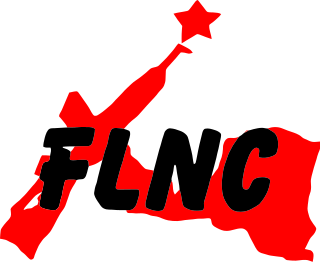
The Congolese National Liberation Front was a Congolese left-wing armed opposition group and political party that was founded by rebels of Katangese origin and composed of former members of the Katangese Gendarmerie. It was active mainly in Angola and Zaire during the 1970s.

Donatien "Marc" Mahele Lieko Bokungu was a prominent Zairean general who served as the last army chief during the long reign of Mobutu Sese Seko.
The Congolese Rally for Democracy, also known as the Rally for Congolese Democracy, is a political party and a former rebel group that operated in the eastern region of the Democratic Republic of the Congo (DRC). It was supported by the government of Rwanda, and was a major armed faction in the Second Congo War (1998-2003). It became a social liberal political party in 2003.
The DRC Mapping Exercise Report, or the Democratic Republic of the Congo 1993-2003 UN Mapping Report, was a report by the United Nations within the Democratic Republic of the Congo in the wake of the armed aggressions and war which took place between March 1993 and June 2003. Its aim was to map the most serious violations of human rights, together with violations of international humanitarian law, committed within the Democratic Republic of the Congo. In doing this it was to assess the capacities within the national justice system to deal appropriately with such human rights violations and to formulate a series of options aimed at assisting the government of the Democratic Republic of the Congo in identifying appropriate transitional justice mechanisms to deal with the legacy of these violations. It contained 550 pages and contained descriptions of 617 alleged violent incidents.

Uvira Territory is a territory located in South Kivu Province in the eastern region of the Democratic Republic of the Congo. Encompassing an area of roughly 3,146 kilometers and with a population estimate of 1,165,092 as of 2020, it is bordered by Walungu Territory to the north, Mwenga Territory to the west, and Fizi Territory to the south. The territory's southeastern boundary is defined by the city of Uvira, which attained city status on 13 June 2019, while the eastern perimeter adjoins the Republic of Burundi and Lake Tanganyika. Within the territory, Kiliba and Sange serve as significant towns.

During the First Congo War, Rwandan, Congolese, and Burundian Hutu men, women, and children in villages and refugee camps were hunted down and became victims of mass killings in eastern Zaire.
André Kisase Ngandu was a Congolese rebel leader. An insurgent in the Simba rebellion of the 1960s, he immigrated to East and later West Germany where he lived for many years. He resumed his rebel activity with Ugandan support in the 1990s and emerged as leader of the National Council of Resistance for Democracy (CNRD) which waged an insurgency in eastern Zaire.
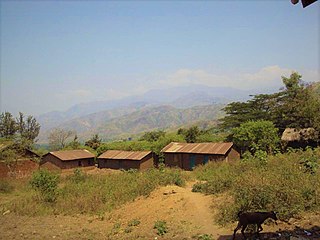
Lubarika is a village situated in the hills and high plateaus of Itara/Luvungi groupement in the Bafuliiru Chiefdom, Uvira Territory, in the South Kivu Province of the eastern Democratic Republic of the Congo. It sits at an elevation of 969 meters above sea level and is near the villages of Murunga and Nyakagobe II. Lubarika is a predominantly agricultural region with large hectares used for subsistence agriculture. Agriculture is practiced by an extensive segment of the population. The products grown are mainly intended for domestic consumption and commercialization. Moreover, fishing is carried out artisanally in Lake Tanganyika by the local population.
The Kasika massacre took place on August 24, 1998, in the villages of Kasika, Kilungutwe, Kalama, and Zokwe, located in the Luindi Chiefdom of the Mwenga Territory in the South Kivu Province, situated in the eastern part of the Democratic Republic of the Congo (DRC). Troops from the Rally for Congolese Democracy (RCD) and Rwandan Patriotic Army (RPA), primarily composed of Tutsi armed forces, killed over 1,000 civilians, predominantly belonging to the Nyindu community.
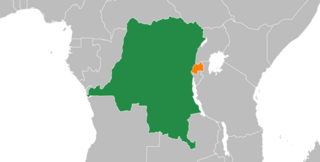
Modern relations between the Democratic Republic of the Congo (DRC) and Rwanda have origins that date back to the European colonial era. Sharing a border that is 221 km in length, the two countries were both colonial possessions of Belgium between 1919 and 1960, and were impacted by the two world wars. Both Rwanda and the Congo experienced violent upheavals during their first years of independence, with the Congo being left with a weak central authority, and Rwanda dealing with periodic raids and incursions from expelled Tutsi rebels in the east of the Congo.
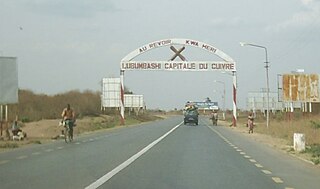
The capture of Lubumbashi took place in April 1997, during the First Congo War in southern Zaire. The rebels of the Alliance des forces démocratiques pour la libération du Congo (AFDL) took the city of Lubumbashi from the Zairean armed forces (FAZ) loyal to President Mobutu Sese Seko.





















